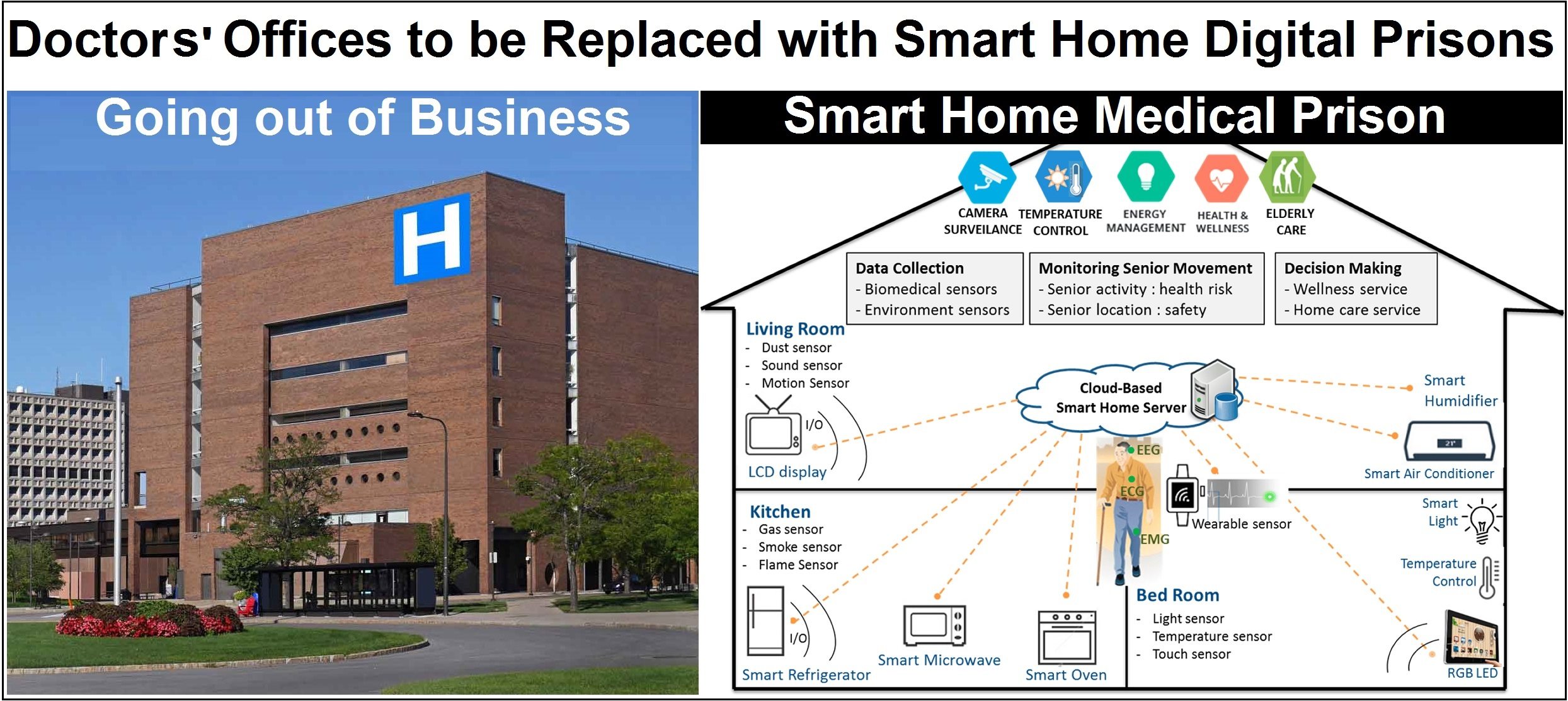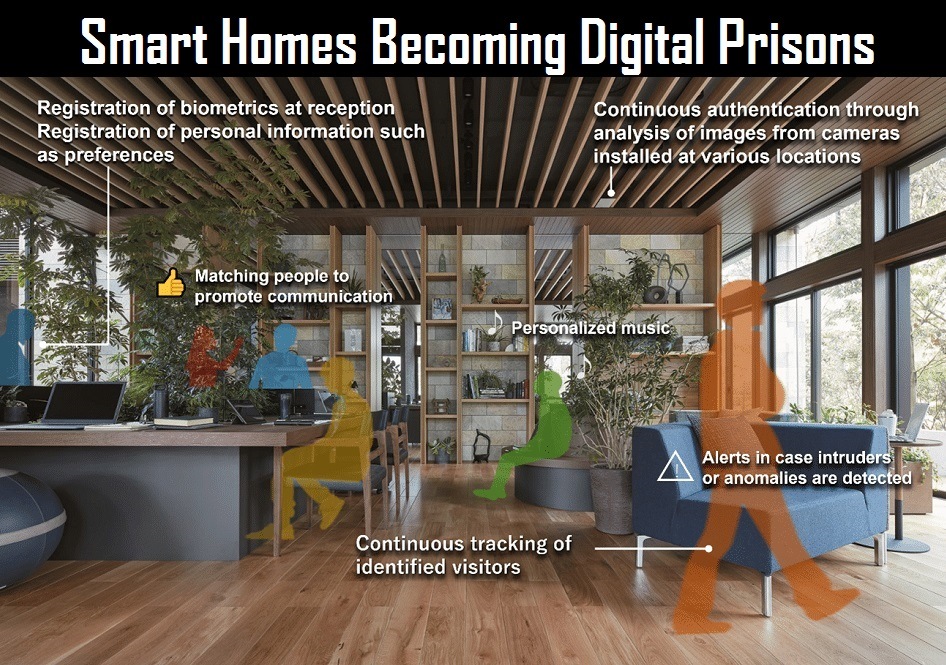by Brian Shilhavy, Health Impact News:

It has been well-reported in the corporate media that hundreds of thousands of medical professionals have quit or retired since COVID, and those that remain are over-worked and unhappy, with many planning on retiring within the next few years.
Millions of people in the U.S. have died or been disabled since the COVID scam started in 2020, further burdening the medical system as patients increase, while medical professionals and services have decreased.
TRUTH LIVES on at https://sgtreport.tv/
The corporate media blames this on the fake COVID “virus”, but many in the alternative media know better, and like myself, have documented how most of these deaths and injuries are actually due to the COVID shots and other COVID protocols that were implemented starting in 2020, showing how it was the medical system itself that caused most of these casualties.
The entire medical system is in the process of collapsing, as it is unsustainable in its current form.
The future of the medical system that the Globalists on Wall Street and in Silicon Valley are now investing in, is home medical care, and “telehealth.” They are rapidly investing in technology to convert homes into “Smart Homes” where patients can be treated right in their own homes using the Internet and “smart” devices.
They are, of course, selling this to the public as something positive, as after all, who wouldn’t want to receive medical care in the comfort of one’s home?
However, as has always been the case, when the Globalists promise their consumers slaves things like “comfort”, “safety,” “convenience”, etc. – these products and services ALWAYS come at a cost, mainly the cost of giving up your privacy and allowing the system to have total control over you.
And if that system of “comfort, safety, and convenience” fails, they will take no responsibility for the consequences.
When a person’s home becomes a “Medical Smart Home” replacing hospitals and doctors’ offices where everything that runs that home is dependent upon the technology, what is going to happen when the Internet goes down, or the power grid becomes unstable and you don’t have reliable electricity any more?
Goal: Your Home is Your Prison

An article published today by Heather Landi at Fierce Healthcare reported where the “Hospital-at-Home” industry is today, and what they feel is necessary to increase this business (government funding).
Momentum behind hospital-at-home continues to grow, but proponents say Congress needs to act to fuel more investment
Hospital-at-home programs got a big boost in 2020 when the Centers for Medicare and Medicaid Services (CMS) launched the Acute Hospital Care at Home Waiver during the COVID-19 pandemic.
CMS allowed certain Medicare-certified hospitals to treat patients with inpatient-level care at home using Section 1135 waivers of the Social Security Act. CMS waived specific hospital Conditions of Participation that require 24-hour onsite nursing for patients.
As of March 1, 315 hospitals across 131 systems in 37 states have been approved to participate in the Acute Hospital Care at Home program. Before the waiver, 20 of these programs existed across the U.S.
However, that CMS waiver is set to expire at the end of this year and legislative action is needed to extend the waiver or make the program permanent.
Healthcare heavyweights, the American Medical Association and the American Telemedicine Association joined major health systems like Geisinger and Mass General Brigham along with tech-enabled companies to pen a letter to Congressional leaders calling for at least a five-year extension to the CMS waiver.
Home-based services for lower-acuity patients help hospitals address critical capacity issues by freeing up hospital beds for the sickest patients without increasing health system costs, proponents of the programs say.
“For us, this a pressure release valve and it’s desirable by consumers and patients and so it’s a win-win all around in relieving some of the burden that our brick-and-mortar facilities face day in and day out,” Heather O’Sullivan, president of Healthcare at Home at Mass General Brigham, one of the largest programs in the country, told Fierce Healthcare last fall.
And demographic trends will drive demand for these services, experts say. As the population ages—the percentage of the global population aged 65 and above is expected to rise from 10% in 2022 to 16% in 2050—at-home care will be crucial to meet healthcare demand and help older seniors age in place.
Hospital-at-home has moved from experimental to a strategic priority for many health systems, Drobac noted. “The evidence and the fact that patients are happier is driving the momentum and excitement behind this movement,” she said.
McKinsey & Company estimates that up to $265 billion worth of care services, representing up to 25% of the total cost of care, for Medicare fee-for-service and Medicare Advantage beneficiaries could shift from traditional facilities to the home by 2025 without a reduction in quality or access.
Investors also are banking on a shift to more at-home care. Investment in health-at-home solutions reached $4.7 billion in 2021 from $2.2 billion in 2022, according to data from VC firm 7WireVentures.
Kaiser Permanente and the Mayo Clinic collectively invested $100 million into Medically Home, a telehealth and remote monitoring company. (Full article.)
The investment into technology that the Technocrats foolishly believe will replace medical professionals is advancing about as fast as the Government-funded push into electronic vehicles (EVs) that has been rapidly advancing the past few years, and if this goes far enough, the results could be far more devastating than the collapsing EV market that is currently happening.
We now live in a generation that believes our lives are dependent upon technology, being fooled into believing that science fiction technology fantasy lands can turn into reality if they just invest enough money to make all this a reality (non-virtual).
Read More @ HealthImpactNews.com



